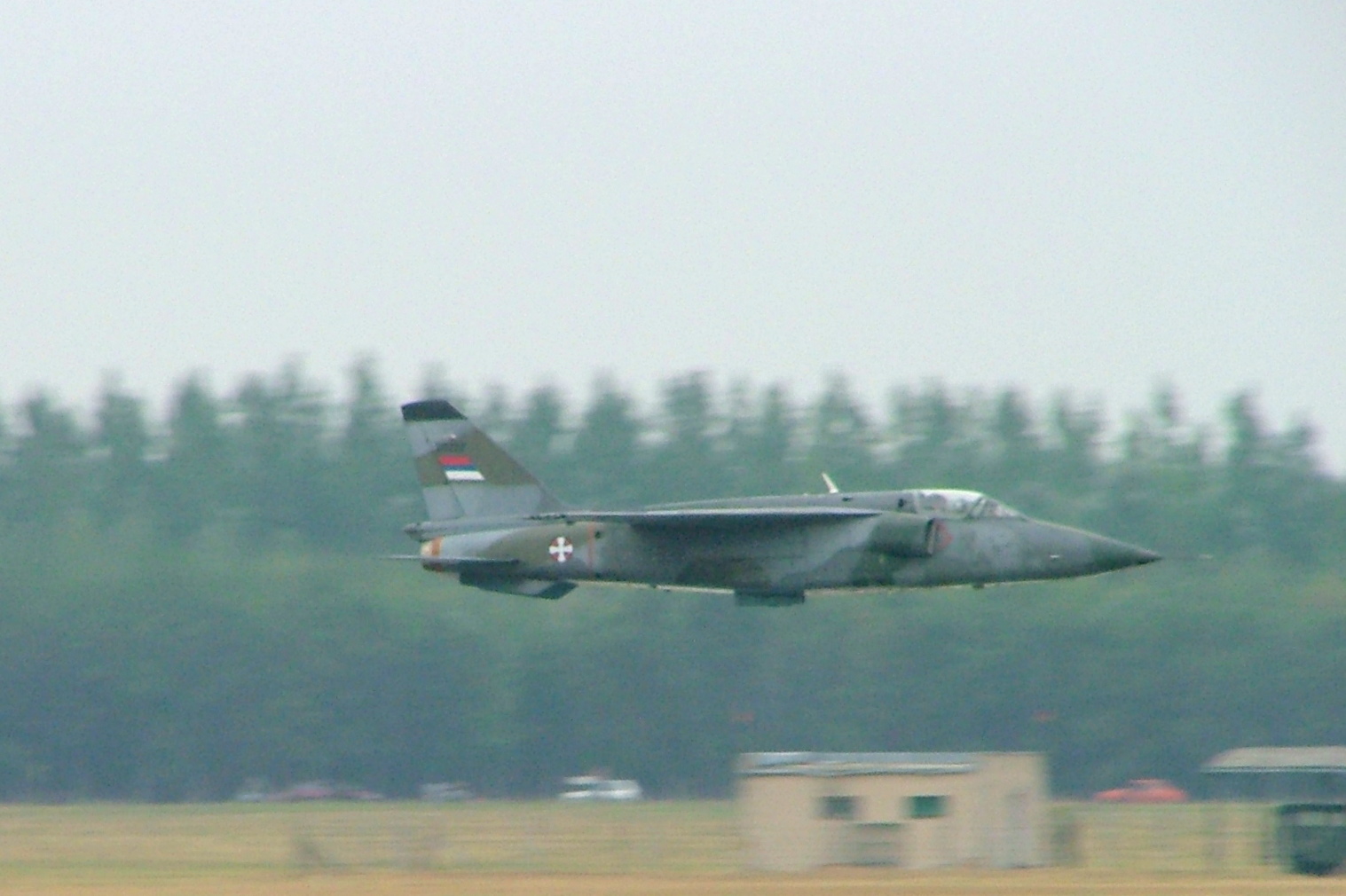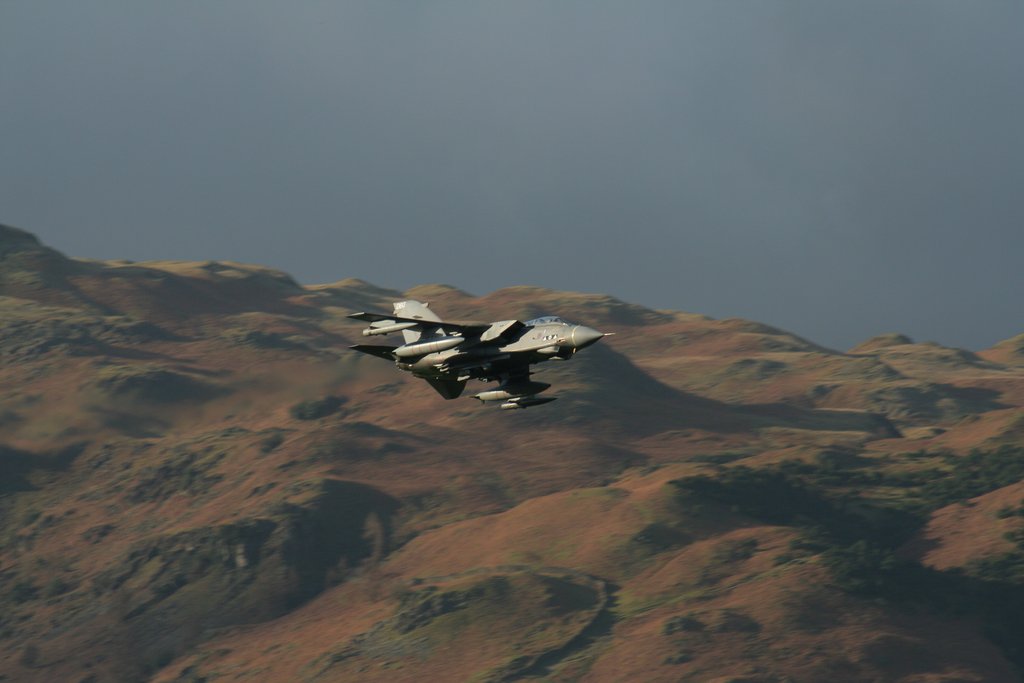Low Flying Military Training on:
[Wikipedia]
[Google]
[Amazon]

 Low flying military training involves
Low flying military training involves
 In the UK, ''low flying'' means fixed-wing aircraft at less than 2000 feet from the ground or light propeller driven aircraft and helicopters below 500 feet from the ground.
Low flying is permitted across the majority of the UK except for large urban areas, civil airports and some industrial and medical sites. Fixed-wing aircraft can fly down to 250 ft above ground level at a speed of up to 450 kt. Lower height limits apply for helicopters and in certain parts of mid Wales, Northern England and Northern Scotland, designated ''Tactical Training Areas''. See, for example, the Mach Loop in Wales.
For safety and to minimise disturbance to the public, military aircrew training at low level is constrained by rules. A specialist military police unit conducts covert monitoring using Skyguard FC radar and investigates alleged infringements.http://www.mod.uk/NR/rdonlyres/22A9CEDC-4069-4E68-AE77-15317255935B/0/UK_Military_Low_Flying.pdf page 10 (accessed 11 December 2011)
In the UK, ''low flying'' means fixed-wing aircraft at less than 2000 feet from the ground or light propeller driven aircraft and helicopters below 500 feet from the ground.
Low flying is permitted across the majority of the UK except for large urban areas, civil airports and some industrial and medical sites. Fixed-wing aircraft can fly down to 250 ft above ground level at a speed of up to 450 kt. Lower height limits apply for helicopters and in certain parts of mid Wales, Northern England and Northern Scotland, designated ''Tactical Training Areas''. See, for example, the Mach Loop in Wales.
For safety and to minimise disturbance to the public, military aircrew training at low level is constrained by rules. A specialist military police unit conducts covert monitoring using Skyguard FC radar and investigates alleged infringements.http://www.mod.uk/NR/rdonlyres/22A9CEDC-4069-4E68-AE77-15317255935B/0/UK_Military_Low_Flying.pdf page 10 (accessed 11 December 2011)

 Low flying military training involves
Low flying military training involves military aircraft
A military aircraft is any fixed-wing or rotary-wing aircraft that is operated by a legal or insurrectionary armed service of any type. Military aircraft can be either combat or non-combat:
* Combat aircraft are designed to destroy enemy equi ...
flying at low altitude to prepare their aircrew, and other military personnel (e.g. air defence
Anti-aircraft warfare, counter-air or air defence forces is the battlespace response to aerial warfare, defined by NATO as "all measures designed to nullify or reduce the effectiveness of hostile air action".AAP-6 It includes surface based ...
troops), for nap-of-the-earth flying in wartime. The aircraft types can include advanced trainers
Sneakers (also called trainers, athletic shoes, tennis shoes, gym shoes, kicks, sport shoes, flats, running shoes, or runners) are shoes primarily designed for sports or other forms of physical exercise, but which are now also widely used fo ...
, ground-attack aircraft
An attack aircraft, strike aircraft, or attack bomber is a tactical military aircraft that has a primary role of carrying out airstrikes with greater precision than bombers, and is prepared to encounter strong low-level air defenses while pres ...
, transports and helicopters
A helicopter is a type of rotorcraft in which lift and thrust are supplied by horizontally spinning rotors. This allows the helicopter to take off and land vertically, to hover, and to fly forward, backward and laterally. These attribute ...
.
Some countries have sufficiently large military reservation
A military base is a facility directly owned and operated by or for the military or one of its branches that shelters military equipment and personnel, and facilitates training and operations. A military base always provides accommodations for o ...
s for such training to take place without affecting the civilian population. In smaller countries, such as in Europe, there can be tension between the military and the local population—mainly because of aircraft noise.
Hazards
Low-level flying involves air safety hazards such as: * Collision with the ground, electricity wires etc. as a result of pilot error (e.g. Cavalese, 1998) or failure of aircraft systems - at low level and high speed there is little time to react to any problem. *Mid-air collision
In aviation, a mid-air collision is an accident in which two or more aircraft come into unplanned contact during flight. Owing to the relatively high velocities involved and the likelihood of subsequent impact with the ground or sea, very sever ...
with light aircraft (e.g. Norfolk, 1974) or other military aircraft.
* Bird strike
A bird strike—sometimes called birdstrike, bird ingestion (for an engine), bird hit, or bird aircraft strike hazard (BASH)—is a collision between an airborne animal (usually a bird or bat) and a moving vehicle, usually an aircraft. The term ...
.
The noise can also disturb animals and hence cause a hazard to horse-riders etc.
By country
Canada
NATO
The North Atlantic Treaty Organization (NATO, ; french: Organisation du traité de l'Atlantique nord, ), also called the North Atlantic Alliance, is an intergovernmental military alliance between 30 member states – 28 European and two No ...
tactical ultra-low-level flight training in Canada is located at CFB Goose Bay in Labrador
, nickname = "The Big Land"
, etymology =
, subdivision_type = Country
, subdivision_name = Canada
, subdivision_type1 = Province
, subdivision_name1 ...
. In response to lessons learned from the Vietnam War
The Vietnam War (also known by #Names, other names) was a conflict in Vietnam, Laos, and Cambodia from 1 November 1955 to the fall of Saigon on 30 April 1975. It was the second of the Indochina Wars and was officially fought between North Vie ...
and the growing sophistication of Soviet
The Soviet Union,. officially the Union of Soviet Socialist Republics. (USSR),. was a transcontinental country that spanned much of Eurasia from 1922 to 1991. A flagship communist state, it was nominally a federal union of fifteen national ...
anti-aircraft radar and surface-to-air missile technology being deployed in Europe, NATO allies began looking at new doctrines in the 1970s–1980s which mandated low-level flight to evade detection. CFB Goose Bay's location in Labrador
, nickname = "The Big Land"
, etymology =
, subdivision_type = Country
, subdivision_name = Canada
, subdivision_type1 = Province
, subdivision_name1 ...
, with a population of around 30,000 and area of , made it an ideal location for low-level flight training. Labrador's sparse settlement and a local topography similar to parts of the Soviet Union, in addition to proximity to European NATO nations caused CFB Goose Bay to grow and become the primary low-level tactical training area for several NATO air forces during the 1980s.
During the 1980s–1990s, CFB Goose Bay hosted permanent detachments from the Royal Air Force
The Royal Air Force (RAF) is the United Kingdom's air and space force. It was formed towards the end of the First World War on 1 April 1918, becoming the first independent air force in the world, by regrouping the Royal Flying Corps (RFC) an ...
, Luftwaffe
The ''Luftwaffe'' () was the aerial-warfare branch of the German '' Wehrmacht'' before and during World War II. Germany's military air arms during World War I, the '' Luftstreitkräfte'' of the Imperial Army and the '' Marine-Fliegerabt ...
, Royal Netherlands Air Force
, colours =
, colours_label =
, march = ''Parade March of the Royal Netherlands Air Force''
, mascot =
, anniversaries =
, equipment ...
, and Aeronautica Militare, in addition to temporary deployments from several other NATO countries. Goose Bay Weapons Range is the only tactical bombing range in eastern Canada. The thirteen million hectare (130,000 square km) range includes ultra-low-level flying training to 30.5 m (100 feet) above ground level, supersonic flight areas, and an inert conventional and precision guided
A precision-guided munition (PGM, smart weapon, smart munition, smart bomb) is a guided munition intended to precisely hit a specific target, to minimize collateral damage and increase lethality against intended targets. During the First Gulf ...
munitions bombing range.
United Kingdom
 In the UK, ''low flying'' means fixed-wing aircraft at less than 2000 feet from the ground or light propeller driven aircraft and helicopters below 500 feet from the ground.
Low flying is permitted across the majority of the UK except for large urban areas, civil airports and some industrial and medical sites. Fixed-wing aircraft can fly down to 250 ft above ground level at a speed of up to 450 kt. Lower height limits apply for helicopters and in certain parts of mid Wales, Northern England and Northern Scotland, designated ''Tactical Training Areas''. See, for example, the Mach Loop in Wales.
For safety and to minimise disturbance to the public, military aircrew training at low level is constrained by rules. A specialist military police unit conducts covert monitoring using Skyguard FC radar and investigates alleged infringements.http://www.mod.uk/NR/rdonlyres/22A9CEDC-4069-4E68-AE77-15317255935B/0/UK_Military_Low_Flying.pdf page 10 (accessed 11 December 2011)
In the UK, ''low flying'' means fixed-wing aircraft at less than 2000 feet from the ground or light propeller driven aircraft and helicopters below 500 feet from the ground.
Low flying is permitted across the majority of the UK except for large urban areas, civil airports and some industrial and medical sites. Fixed-wing aircraft can fly down to 250 ft above ground level at a speed of up to 450 kt. Lower height limits apply for helicopters and in certain parts of mid Wales, Northern England and Northern Scotland, designated ''Tactical Training Areas''. See, for example, the Mach Loop in Wales.
For safety and to minimise disturbance to the public, military aircrew training at low level is constrained by rules. A specialist military police unit conducts covert monitoring using Skyguard FC radar and investigates alleged infringements.http://www.mod.uk/NR/rdonlyres/22A9CEDC-4069-4E68-AE77-15317255935B/0/UK_Military_Low_Flying.pdf page 10 (accessed 11 December 2011)
See also
* Ground Proximity Warning System (GPWS) *Controlled flight into terrain
In aviation, a controlled flight into terrain (CFIT; usually ) is an accident in which an airworthy aircraft, under pilot control, is unintentionally flown into the ground, a mountain, a body of water or an obstacle. In a typical CFIT scenari ...
* Lists of accidents and incidents involving military aircraft
* Military operations area
* Military training route
{{No footnotes, date=May 2017
Military training routes are aerial corridors across the United States in which military aircraft can operate below 10,000 feet faster than the maximum safe speed of 250 knots that all other aircraft are restricted to ...
* Buzz number
Notes
References
{{Reflist Aerial maneuvers Military aviation exercises Military education and training